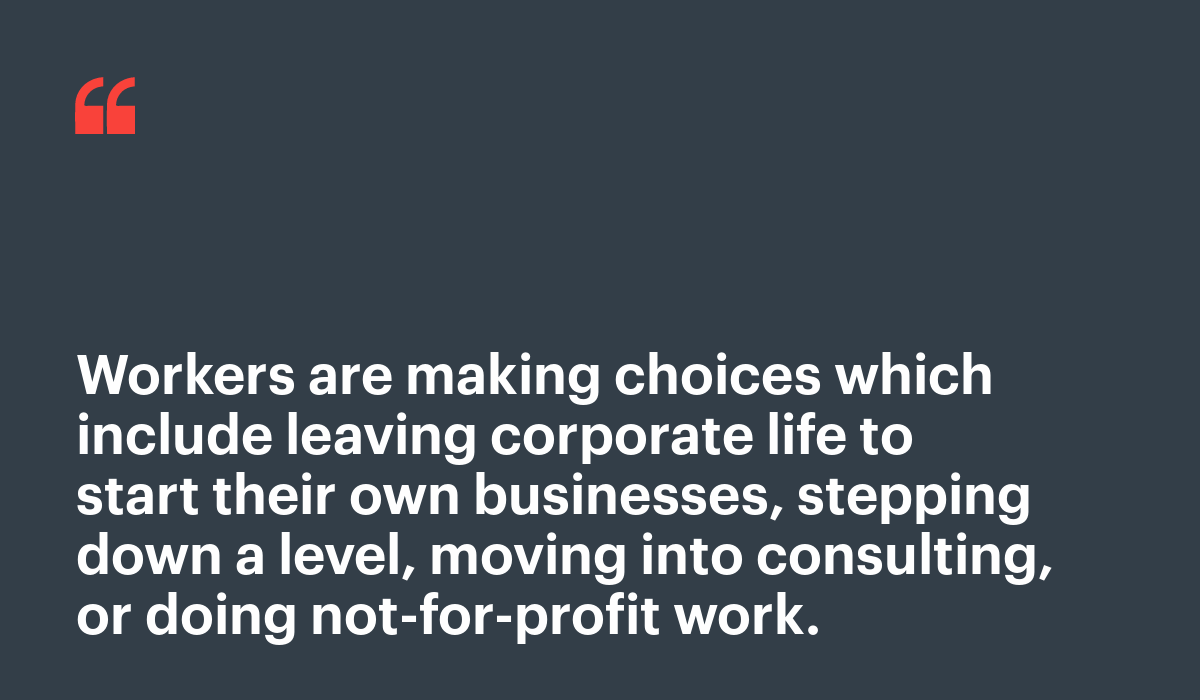It’s Time for Talent Acquisition Teams to Meet New Hiring Imperatives
It’s time for organisations to stop subscribing to old talent acquisition models. Experts from Amazon, Capital One, and AstraZeneca share how.

We’re in the toughest employment market of this century, with talent scarce enough for signing bonuses to be commonplace for some roles. Remote working has also made poaching valuable staff easier than ever. There’s a huge demand for many roles—but a weak supply. Succeeding in this market and recruiting the best is a more challenging job than ever before.
And yet, talent acquisition leaders often have no analysis of what is working well in their pipeline and what isn’t. A poll run during our Strategic Talent Acquisition with People Analytics webinar in September 2021 found that only half (52%) of talent acquisition professionals are using market data for sourcing and compensation. Only four in ten are using analytics to improve sourcing levels, and a similar number are using analytics to monitor and improve overall candidate experience.
So why are so many working without data, and what’s the way forward here? At the aforementioned webinar, the firm messages from analytics leaders from Amazon, Capital One, and AstraZeneca was that:
This dramatically asymmetric market is not a flash in the pan. Strap in. It’s going to be like this for several years, at least.
Your previous approach to talent acquisition needs to change, and perhaps change radically. Things need to be done differently. Sweating the old models won’t work.
Building a talent pipeline for the future of your organisation will require new ideas and approaches, and new skills within the talent acquisition model to understand the talent needs of business units as they evolve. New talent acquisition strategies will also be acquired to attract and retain the people and skills your organisation needs to deliver on its corporate strategy. The labour market was changing before the pandemic, but the COVID era has brought talent acquisition fully into a new world.
The great resignation is not a blip
The socioeconomic drivers behind the current employment market are myriad, but it’s worth name checking a few. Our latest Visier Insights™Report, Stop the Exit, looked at our unique database of more than ten million anonymised, standardised employee workplace records and found a 25% increase in the annualised resignation rate in 2021 compared to 22% in the same period in 2019, and 18% in a pandemic-ridden period of January to August of 2020.

Workers are making choices which include leaving corporate life to start their own businesses, stepping down a level, moving into consulting, or doing not-for-profit work. Also, 30-35 and 40-50-year-olds have all increased their resignation rates by more than 38%. These age groups are typically more stable, and slow to change, so their increased resignation rates are indicative of the disruptive nature of this year’s resignation wave.
According to Ian Cook, Visier VP of People Analytics, those who believe the reticence about returning to the office-centric way of working is simply a pause before we return to the previous status quo are quite wrong.
“People are moving locations, and buying houses to give themselves options for new ways of working and new lifestyles,” says Cook. “That’s not a blip, but something that talent acquisition professionals and leaders responsible for operations and revenue streams must build into their strategies going forward.”
In some areas, like DEI for example, talent acquisition is currently highly aggressive, with a dearth of suitable candidates and recruiters working harder and harder to get them onboard.

“Hiring goals have never been higher, and at the same time we are seeing unprecedented levels of attrition,” says Ashish Parulekar, Head of People Analytics at Capital One. “Put those two things together, and you can see how capacity to hire is under great stress.”
One option might be to hire lower-quality candidates or take longer to find better ones. But organisations want the opposite—to raise the bar on quality and hire candidates faster. “Whichever way you look at it, you can’t solve it by throwing more bodies into the talent acquisition function,” says Parulekar. “But it’s certainly an opportunity and a particular point in time to transform how you go about the whole thing.”
So how do we get from where we are today to something that looks fit for the realities of today’s labour markets and organisational talent requirements?
Get to the best candidate, faster
One step to break these cycles and move towards long term talent solutions for your organisation—and it feels like a big one culturally—is to rely less on experience and resumés. If speed and diversity are important factors (and they are in almost all cases currently), then analytics and technology can take you to the best candidate faster than the ‘proxy’ indicators of which university somebody went to, or how they have climbed the ladder at another organisation.
The shift is happening partially already, with the focus on skills rather than qualifications, but we need to step further away from the CV mindset. If you can make a solution like that a permanent differentiator for your business, then you (and your team) are really getting somewhere.
Another development we need to see is an extension of analytics to understand the business impact of talent acquisition actions over time. Recruitment success is an important measure, but not enough attention is given to how long new employees stay with the company, or the reasons they leave, even though the data is there and relatively easy to collect and interpret with the right tools.
There are also further gains to be had from better internal recruiting, says Manisha Singh, VP Employee Experience, Analytics and Digital HR at AstraZeneca. “I’ve seen external talent teams with highly developed processes that work with almost military precision, but I don’t think the internal approach has kept up at all.”
The ongoing employability of your existing workforce is certainly a measure of the health of wider employee experience and corporate culture, but training, developing skills, and making sure internal talent is nurtured across the board is something many organisations have ignored for too long.
Customisation at scale
The pandemic has demolished the myth that we all want the same things from work, or that we want to work in the same way. There are, for instance, talented people who want to be wholly remote, those that are happy with a hybrid model, and those that want regular hours at the office to compartmentalise their time.
Fishing from these multiple pools and managing a workforce with a vastly wider array of hours, preferences, locations, and HR policies, adds complexity to the recruiting mix. Identifying and serving the talent needs of business units against a backdrop of sustained digital and market disruption is a challenge that can only be met with the aid of people analytics. This must be the aspiration and lode star of any successful talent acquisition strategy today, and one that brings your organisation better competitive advantage.
Toby Culshaw, Talent Intelligence Leader, Global Ops, Amazon, is part of a team responsible for maintaining the pipeline for a 250,000-person permanent workforce, ranging from roles in robotics and warehousing, to an airline business. His team looks closely at labour market trends, as he believes talent acquisition is an important lead indicator of what is to come.

“This isn’t something we‘re going to solve in the next quarter,” he says of the current aggressive talent market. “This is something we’re all going to have to live with for many years.”
Recruiter, develop thyself
New approaches to talent will require new skills within talent teams themselves. Partnering and communication skills will be particularly useful for business unit leaders and talent professionals so that they can work together effectively, understand talent needs in higher definition, and gain insights about how to meet goals through smarter use of analytics and technology.
Strikingly, our poll found that only 38% of organisations were using pipeline analysis to achieve diversity targets, and a mere 29% were using the same to identify ‘at risk’ requisitions. Clearly, these numbers will rise over the coming months and years. For organisations that want to compete and win in the current labour market, they have to. The age of decision making without data is over.
Get Outsmart content straight to your inbox
Subscribe to the People Insights Monthly newsletter for actionable insights and stories.
Subscribe now